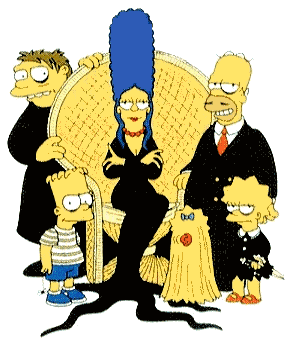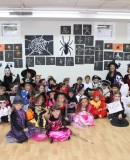Halloween: A Celebration of the Dark
Halloween is an annual holiday celebrated on October 31. In the United States, it is second only to Christmas in popularity and in money spent on decorations. Also in Europe, Halloween is gaining more and more popularity over the years.
 Halloween originated with the ancient Celtic celebration of Samhain which occurred on October 31. This celebration goes back more than 2000 years. It marked the beginning of the cold and barren part of the year and was associated with death and the spirits of the dead. The dead were believed to walk the earth on this night so bonfires were lit and animal skins donned for protection. The Catholic church later co-opted this religious event and renamed it All Hallows Eve since it was on the the eve of Allhallows Day (All Saints’ Day).
Halloween originated with the ancient Celtic celebration of Samhain which occurred on October 31. This celebration goes back more than 2000 years. It marked the beginning of the cold and barren part of the year and was associated with death and the spirits of the dead. The dead were believed to walk the earth on this night so bonfires were lit and animal skins donned for protection. The Catholic church later co-opted this religious event and renamed it All Hallows Eve since it was on the the eve of Allhallows Day (All Saints’ Day).
The day is often associated with orange and black, and is strongly associated with symbols like the jack-o’-lantern. Halloween activities include trick-or-treating, wearing costumes and attending costume parties, ghost tours, bonfires, visiting haunted attractions, pranks, telling scary stories, and watching horror films. Homes are decorated as hounting houses.
Trick-or-treating is the most widely recognized Halloween tradition. It is an activity in which children go from house to house asking for treats such as candy with the question, “Trick or treat?” Trick-or-treating is done with children donning Halloween costumes and it is one of the main traditions of Halloween. It has become socially required that if one lives in a neighborhood with children to purchase candy in preparation for trick-or-treaters. Trick-or-treating declined in the late 1970s and early 1980s with the tainted candy scare. Hospitals even got involved offering free x-ray scans of Halloween candy. This turned out to largely be an urban legend and trick-or-treating is making somewhat of a comeback.
Creatures traditionally associated with Halloween
Creatures that are traditionally associated with Halloween fall into three categories, although not necessarily into just one of them. There are mythical creatures, like ghosts, ghoules, vampires, werewolves, witches and warlocks. Also fictional caracters are used – Count Dracula and the Mummy for instance. The third category is real creatures. Bats are a symbol of ghosts, death, and disease. Black cats are also very popular during this season. They are traditionally associated with witches or demons. Skeletons are used to symbolize death. In Halloween you can appear as each one of these creatures.
The legend of Jack-o’-lantern
Jack-o’-lanterns are the ubiquitous Halloween symbol. They are made from hollowed out pumpkins with a face carved into them. Often the face is made to appear frightful. A candle is placed inside the lantern to illuminate it.
From Irish folklore comes the legend of the jack-o’-lantern. A drunkard named Jack stumbled home from a night of drinking at a local tavern. The Devil appeared and demanded that Jack come to Hell with him because of his evil ways. Jack convinced the Devil to climb a nearby tree to pick an apple. As the Devil climbed the tree, Jack carved a cross in the tree’s trunk thereby preventing the Devil from coming back down. The Devil demanded that Jack release him. Jack said he would if the Devil promised to never admit him to Hell. The Devil agreed. When Jack died he was too sinful to be allowed into Heaven, but the Devil would not let him into Hell, so Jack carved out one of his turnips, put a candle inside it, and began endlessly wandering the Earth looking for a place where he could find eternal rest.
Movies for Halloween
* Dracula (1931)
* The Mummy (1932)
* The Nightmare Before Christmas (This movie combines themes from both Halloween and Christmas)
* The Wolf Man (1941)
Fun game for Halloween
Bobbing for apples is a game often played on Halloween. It consists of putting apples in a container filled with water and then trying to grab them with one’s mouth. The practice has been criticized as being unsanitary.
Disclaimer: The views, opinions and positions expressed within this guest article are those of the author Simon Schönbeck alone and do not represent those of the Marbella Marbella website. The accuracy, completeness and validity of any statements made within this article are not guaranteed. We accept no liability for any errors, omissions or representations. The copyright of this content belongs to Simon Schönbeck and any liability with regards to infringement of intellectual property rights remains with the author.















The opinions expressed by individual commentators and contributors do not necessarily constitute this website's position on the particular topic.